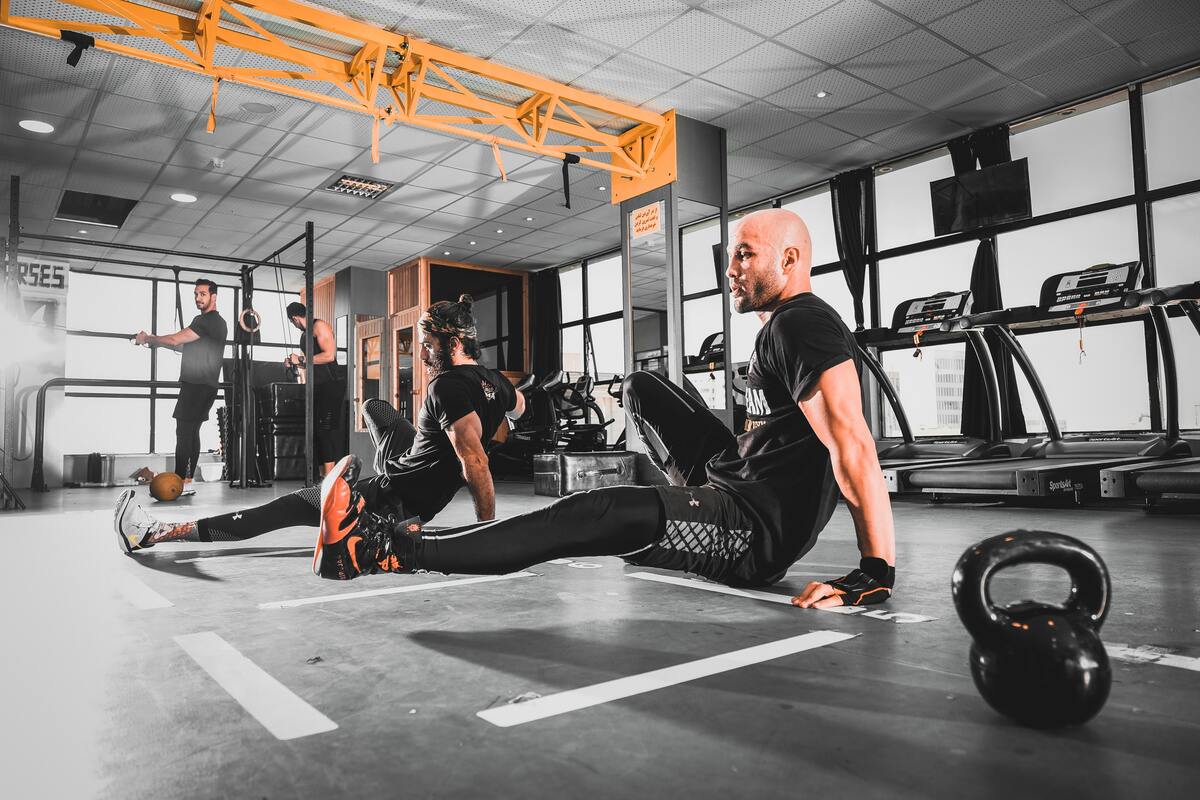
As we age, getting in shape and staying fit becomes increasingly difficult, so if you want to get fit after 40, it won’t be as easy as it was when you were younger. It might take longer to see results, but getting fit after 40 is still possible.
Our bodies change as we age. Our metabolism can slow down, we have less muscle mass, we need fewer calories, and we may even have less energy to exercise. However, no matter your age, it’s important to focus on keeping fit.
If you want to get fit after 40, it’s a wise decision, and no matter how old you are, it’s never too late to start getting fit.
In general, it’s never too late to upgrade your fitness by prioritizing more physical fitness and a healthier diet. In fact, studies show that increasing physical activity later in life can result in a host of health benefits as we age, from reduced risk of cancer and cardiovascular disease, to weight loss and better mobility (range-of-motion).
The key to success if you want to get fit after 40, is learning how to adjust your activity and diet plan to suit your body’s needs, and adjust your priorities to be more health-oriented.
Why Get Fit After 40? The Importance of Staying Fit As We Age
Check out this article that details the importance of staying fit as we age. If you hit your 40s, or even go beyond the age of 35 without being in excellent shape, it can be tougher at that age to start shedding pounds or getting fit. Some people feel they’ve missed out on the opportunity to be fit if they’re 40 and out of shape, but that’s simply not true, because it’s not too late.
Just like it’s not too late to change your career after age 40, it’s also not too late to get fit after 40. Developing a good fitness routine after 40 could be the key to longevity and independence in later life. It ensures you can continue to look and feel your best for longer, decreasing the chances of developing serious health conditions later in life.
Many people have succeeded in completely transforming their fitness and their body after age 40, with dedication and lifestyle changes.
Staying fit as we age is an excellent opportunity to improve your mental health, as well as your physical wellbeing. People who stay active can reduce stress and anxiety in their life, improve their sleep quality, and even achieve higher levels of self-confidence.
You’ll find that exercising regularly will give your brian feel-good endorphins, boost your mood, improve your self-confidence, and improve your mental health. Your physical health and physical strength will of course also improve, including range-of-motion and mobility.

When you focus on good health after 40, you could:
- Burn visceral fat by getting fit after 40: It’s common to build up some visceral fat around your internal organs and stomach by the time you hit age 40. This stubborn fat substance can be difficult to reduce or get rid of, and is often harmful to the cardiovascular system if left untreated over time.
- Preserve lean muscle: You don’t want to lose muscle mass as you age by neglecting fitness after 40. Muscle loss naturally accelerates as we get older. We can lose up to 3 to 8% of our muscle every year after we turn 30. This leads to decreased strength, making everyday tasks harder. Plus, lack of muscle mass reduces metabolic function, increasing your risk of gaining weight.
- Balance your hormones: Aging can cause imbalances in a range of hormones, including estrogen and testosterone levels. Maintaining appropriate levels of activity will help to improve your hormone levels, so you have less risk of osteoporosis and poor mood.
Why is it Harder to Get Fit After 40?
Unfortunately, getting fit and staying that way is more difficult as you get older. While you might have been able to eat anything you wanted in your 20s and not gained weight, this is often not the case by the time you reach 35.
After 35, women in particular are more insulin-resistant and sensitive to stress. While your caloric intake, diet history, exercise history, and lifestyle will all influence how you look and feel, failure to remain active as you age can cause a lot of problems. The most common reasons it’s harder to stay fit as you get older include:
- Muscle loss: The older you get, the more muscle you lose. Since muscle helps to accelerate the metabolism and provide essential strength, less muscle makes it tougher to stay active, and lose weight quickly.
- Stress: Increased stress often contributes to weight gain. When you’re living a busy life in your late 30s and 40s, you’re exposed to significant amounts of stress. It’s easy to ditch the diets and reach for a sugar fix or remain inactive for long periods.
- Metabolism: As you get older, your metabolism can begin to naturally slow down. This means you need fewer calories, and more activity to maintain the right weight. Changing your lifestyle can be complex, particularly after a number of years.
- Hormonal changes: Changes in hormones can tip the scales when it comes to staying fit. For women, it’s common to gain weight during menopause due to a drop in estrogen. Even in your 40s, the shift in your estrogen levels makes it harder to preserve your weight.
Staying healthy can be difficult for men as well, as their testosterone levels begin to drop, making it tougher to regulate fat distribution, maintain muscle strength, and burn calories. Men have a tough time figuring out how to get fit after 40, but it’s even more difficult for women due to the different ways the female body holds onto fat.
Sometimes, if you have weight loss goals or fitness goals, it helps to take a CircleDNA test. This at-home DNA test from CircleDNA will reveal your genetic diet and fitness reports. It’ll reveal what meal plan suits you best, based on your genetics, and which exercise program suits you best based on your genetic strengths and weaknesses. This can help you develop an exercise routine that works well for you.





